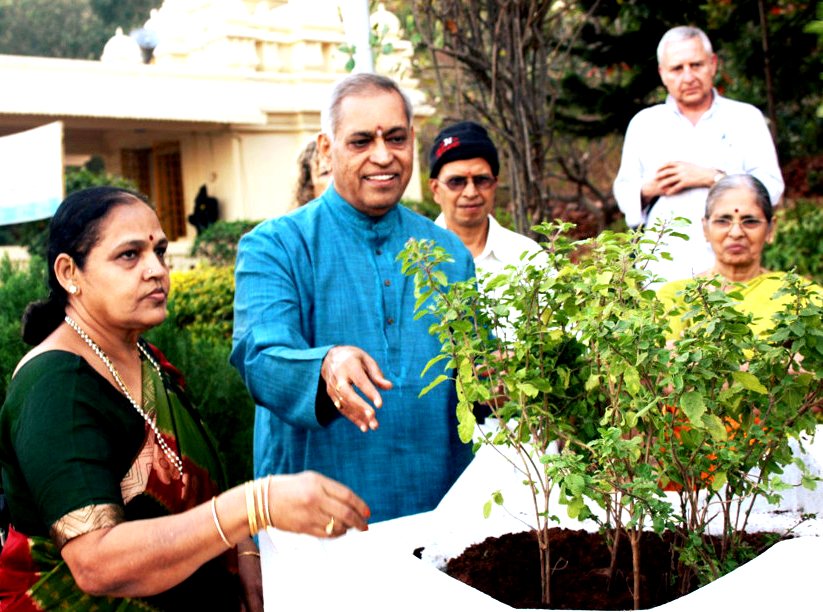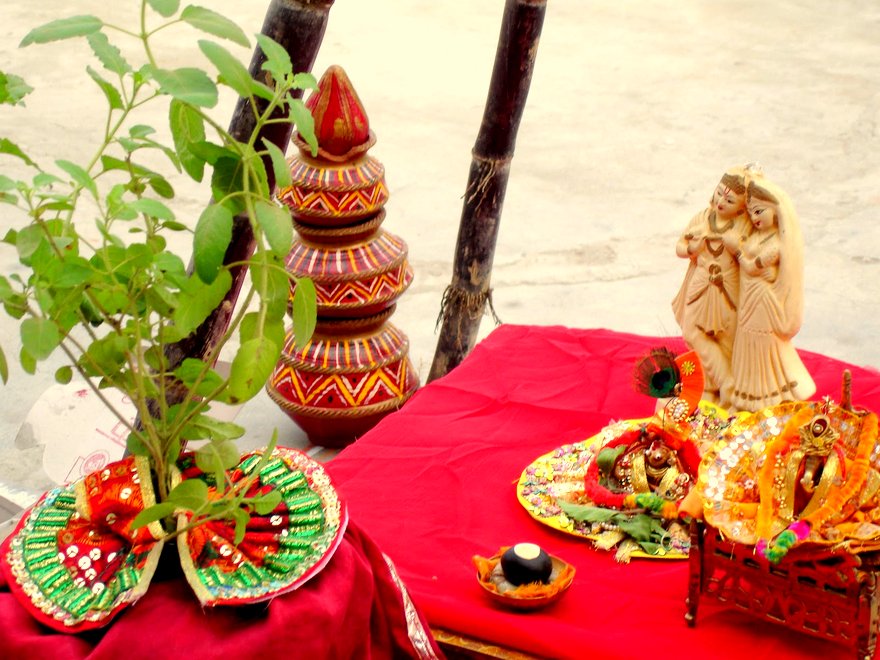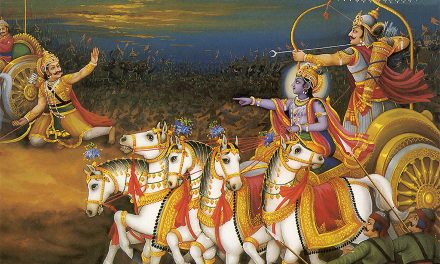“Tulasi is auspicious in all respects. Simply by seeing, simply by touching, simply by remembering, simply by praying to, simply by bowing before, simply by hearing about, or simply by sowing this tree, there is always auspiciousness.”
“Anyone who comes in touch with the Tulasi tree in the abovementioned ways lives eternally in the spiritual world.” —Srila Prabhupada, The Nectar of Devotion. Indian basil or Tulasi as it is commonly called, is an important symbol in the Hindu tradition. The followers of Vishnu who are called Vaishnavaites, worship Tulsi and tend to it carefully, believing it to be sacred as God’s representative on earth.
[wp_ad_camp_1]
There are two types of Tulasi plants. The dark one called Shyama Tulasi possesses greater medicinal value than the light one called Rama Tulasi. It is the Shyama Tulasi that is commonly used for worship by the devout. In fact, a Hindu household is considered incomplete if it did not have a tulsi plant in the courtyard of the house.

Tulasi is normally planted on either a small mound of soil or on a square brick pillar, which has images of deities installed on all four of its sides. The name of this mound is usually called Vrindavana or the abode of Lord Krishna.
It is believed that nothing on earth can equal to the virtues of Tulasi, being the only plant that is regarded as self-purifying. With this in mind, Tulasi is washed and reused in puja without creating any impurity.
There are many myths and legends found in ancient scriptures that regard Tulasi as sacred and point to its importance in religious rituals. One legend is that when Lord Krishna was weighed in gold by Satyabhama against all her legendary wealth, the scales did not balance until a single Tulasi leaf was placed on the pan by Rukmini with devotion.
Another legend symbolizes Goddess Lakshmi as Tulasi and those who wish to live a righteous and happy family life worship the plant.
In an annual ritual called “Tulasi Vivaha”, Tulsi is married to Lord Vishnu on the 11th day of Karttika according to the Hindu lunar calendar. This usually falls in mid October and inaugurates the marriage season in India.
When a person is dying, leaves or spray of Tulasi plant is placed on his face, eyes, ears and chest. He is then sprinkled from head to foot with a twig of Tulsi that has been dipped in water for purification of body in hopes of removing all sins and ending the cycle of rebirth.
Presenting a twig of Tulasi to someone who may be suffering from anxiety or stress is supposed to eliminate his worries.
In the ritual of consecration of Kalasha, Tulasi is accorded sixth place among eight objects of worship.
Besides its religious significance, Tulasi is respected for its valuable medicinal properties in Ayurveda, the ancient art of natural medicine. All parts of the plant are used to cure various ailments.
Source: Sanskriti Magazine














Very Nice.
Radhe ! Radhe ! Excellently you had briefed about Divine Tulasi Devi’s plant leaves and its spiritual medicinal values.
Kly send more information and also highlight the benefits of Hindus keeping Vibhudhi, Kumkum and Gopi Chandan on forehead.
Nowadays many brahmin hindu families neglect this and they don’t believe in keeping these holy spiritual rakshas of divine Vibhudhi (Thiruneer) Mangal Kunkumam and highly spiritual Gopi Chandan. Kly give a detailed information to wake up the ignorances of negligant people.
Radhe ! Radhe !
chant : Hare Rama hare Rama –
Rama Rama hare hare !
Hare Krishna hare Krishna !
Krishna Krishna hare hare !
You are doing a great service for Hinduism, by providing most valuable informations which every Hindu must know
Jaya Tulasidevi-Krishna! Haribol!
Excellent! Every one should know the importance of Tulasi and respect it.
Hari Om….
For quite some time people are made to believe by some Swamis that keeping the Photo or any work related to ‘Geetopadesham’ (Lord Krishna dispelling the doubt of Arjuna) in the house, office or in any living area will bring ill effects to the person or family. Since we all know that Lord Krishna in his Geetopadesham had in fact made Arjuna raise up from his state of disillusionment and made him fight against Adharma to restore Dharma. Each and every verse of Gita is meant to lift every human being from falsehood to sainthood. Moreover it teaches us how to live this life and attain Moksha.
Please publish an article on this subject to dispel the doubt of the common man and make him understand the false propaganda unleashed by some, so called Swamis and confusing the devotees. Similar propagandas are making round in the name of Mahabharata book also. They say that keeping Mahabharata book in the house will bring conflicts and fight among people living in the house.